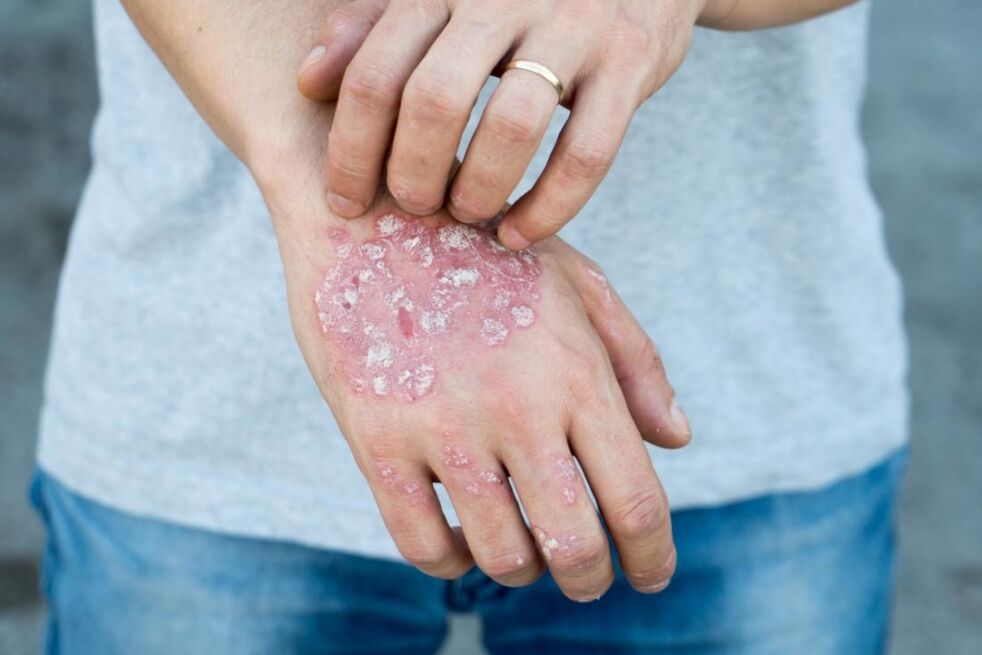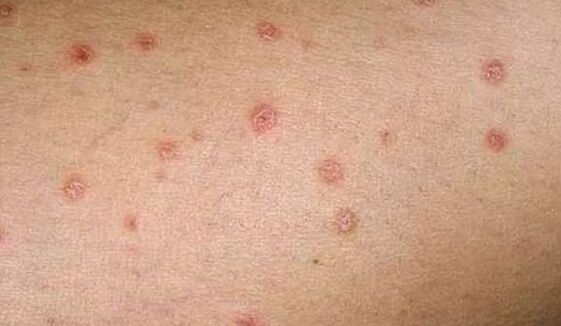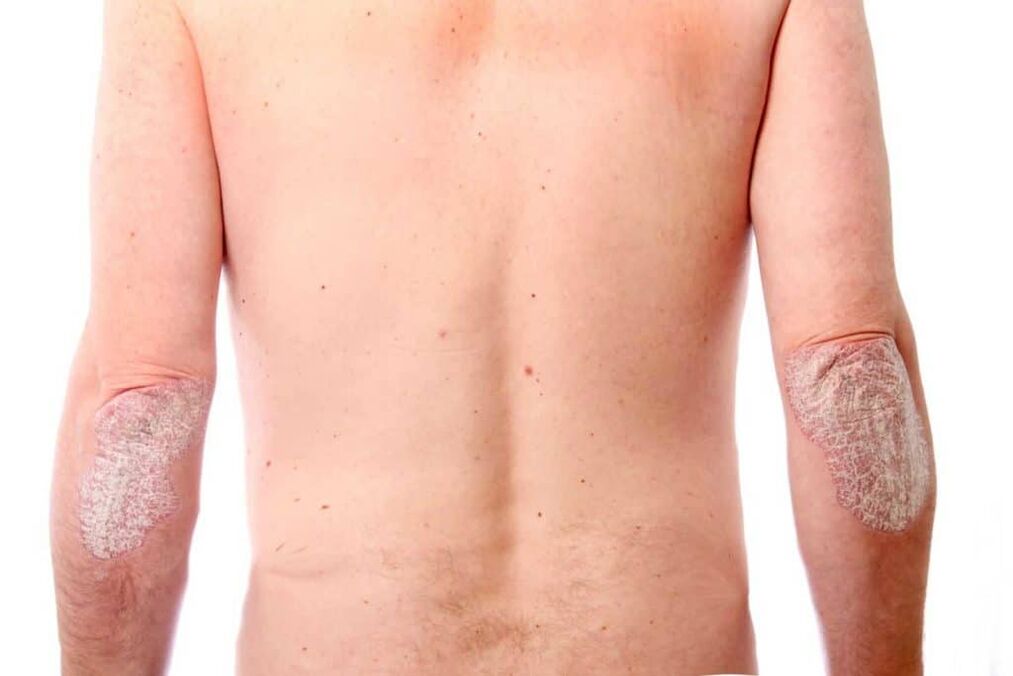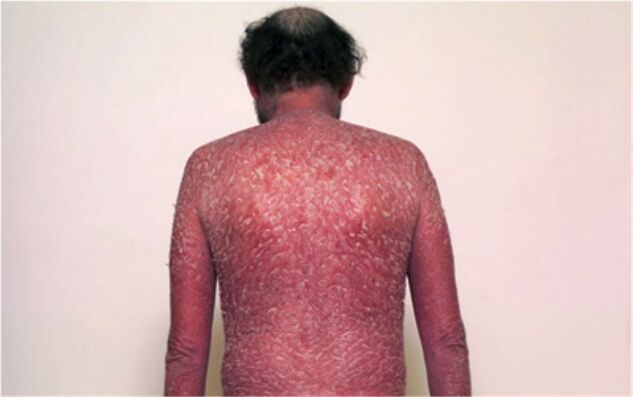Psoriasis is one of the most common chronic skin pathology in the world, and treatment problems are still important.According to statistics, for 2017, 130 ml of cases are registered in the world: every twenty -four population of the planet suffered a disease.Usually, pathology debuts fall from 16 to 20 and from 40 to 60 years.In 65% of people are sick, it is observed in lightweight form, and the skin surface is affected by slightly plaques (up to 3%).The average level of psoriasis suffers from 25% (up to 10% of the skin area) and severe, where more than 10% of the surface is affected - 8%.

The true cause of the disease has not been studied.It is considered that parasitic infections, allergic tendencies, hormone imbalance, metabolic disorders and heredity can cause the appearance of psoriatic plaques.
The tendency to develop psoriasis in childhood, if one of the parents is sick, is 25%.When both - the probability increases to 50%.According to statistics, out of 100 children in the world, 4 of them are psoriasis, and cases of disease in men, less often than women by 25%.
A list of bad factors also includes infectious diseases, neuropsic injuries, and the negative effects of low temperatures.
As a result of the interactions of some external and internal causes, there is a violation of the blood circulation of the dermis papillary layer, which is the reproduction of young and inadequate epidermal cells to occur so fast that they do not have time to finally mature, accumulating on the surface with a scaling scale in the form of plaques or formed shapes.
The disease is so developed that over time they join and turn into big spots.
Psoriasis lasts throughout life and self -case cases are single.Alternative remission periods with severity, which are more commonly observed in the autumn winter.But there are cases of unlimited (all -season) and photosensitive (summer) cases.
Phase
In the pathological process in psoriasis, several periods, and courses such as waves occur with the replacement of severity cycles and forgiveness.For experts, the diagnosis of the disease is not difficult: he has specific and specific symptoms and skin types at different levels in pathological development.
Early stage
Initially, when the disease emerged, the papules of the size of the pin appeared. In psoriasis, they are grouped on the skin of the limbs and initially do not develop and do not change.This controller plaque (task).

Classical clinical manifestations in the early stages form a psoriasis triad:
- Candle place.Papules are covered with white plaque with gray plaque, loose and irregular.It is easily eradicated by a spatula.The external scale is resembling the smallest chip of Starin - the material for making candles.
- Terminal movie.The smooth, shiny and watery hyperemic surface can be seen under a loose raid.This is the last layer of cells that can leave.
- Dew Bloody is the last sign of Triad.It is formed when the terminal film is damaged and externally manifests itself in the form of a small drop of blood, which does not combine with each other.
Psoriasis is a chronic disease and it is impossible to fully recover.The main task of treatment is to achieve continuous and prolonged forgiveness.From inadequate therapy, every two to three months is observed.The early treatment of psoriasis is soft, and it begins with the use of keratolytic external products in the form of ointments and creams based on salicylic acid and lactic acid.
Drugs eliminate discomfort, suppress excess cell formation, relieve inflammation and peel.Psoriasis over time becomes stable (stable) to certain drug actions.Therefore, the medical program is reviewed after a certain period of time.This approach is called rotation - periodic changes in the technique that enter the circle.
A progressive stage
The second stage of the disease is the real peak.

The first sign - peeling is located only in the middle of the papules, and the pink shot remains along the edge.This is a symptom of growth, as a single rash increases and combines.The second sign of development becomes symptoms of skin reaction: 10-14 days after injury (lecet, scratches), typical plaques appear.Progressive psoriasis provide other symptoms that are not observed at other levels - they are itching with different intensity.Progressive levels of psoriasis treatment are performed in hospitals and include:
- Drug medicines: antihistamines, anti -anti -non -acting drugs, immunostimulants, vitamins.
- Physiotherapy: PUVA, UFO, applications with paraffin, sulfide and radon baths.
After the patient, sanatorium-resort treatment is recommended.In very severe cases, corticosteroid and cytostatic agents are prescribed.Psoriasis affects the nail plate.They become fragile, boring, rising in bed.Usually, this condition with disease occurs even from small damage.
Stage of stationary
After development, about the fourth weekend, the healing of papules occurs.It starts from the center to the edge, and the plaque has a feature ring shape.Their color is less intense, new formation does not appear.The stage of psoriasis does not give special discomfort.The patient is not painful, there is no itching.The therapeutic program remains the same.There are only small adjustments that pursue one goal: to give the opportunity to enter the final phase and not change back to the progressive stage of the psoriasis.

Fade
After complex and intensive care, forgiveness occurs, and the disease is included in the hidden phase.In the final stage, peeling psoriasis disappear, the plaque has a pale color.They gradually resolve and join the skin.Exceptions - "frozen" daddles remain on elbows, knees, stomach and buttocks.The remission period is individual, and can last from three months to several years.Patients with psoriasis should monitor themselves and at the first signs to see a doctor and undergo treatment.Although chronic diseases are exposed to relapse, subject to all suggestions, psoriasis allows for normal and rich life.























